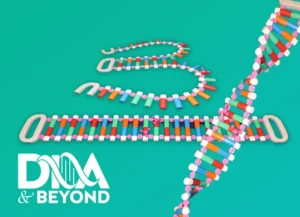At the Human Genome Project website of the National Institutes of Health, we find these overview comments (https://www.genome.gov/genetics-glossary/Epigenetics): “Epigenetics is an emerging field of science that studies heritable changes caused by the activation and deactivation of genes without any change in the underlying DNA sequence of the organism. The word epigenetics is of Greek origin and literally means over and above (epi) the genome.”
Did you know that a whole series of chemical tags and flags are involved in the function of DNA and its products? In addition to the direct methyl-tagging of DNA, we find three kinds of tiny chemical tags attached to the DNA spools called histones: methyl tags, acetyl tags, and phosphor tags (see the embedded picture of DNA wrapped around histones). On top of that, large proteins – especially ubiquitin and SUMO proteins – can also act as super-sized histone tags, affecting the way DNA is read, or even left “locked up” in storage. The molecular weight of these proteins is hundreds of times that of a methyl or acetyl tag.
At the same genome.gov webpage, Laura Elnitski explains in more detail: “Epigenetics is the study of changes in gene function that are heritable and that are not attributed to alterations of the DNA sequence. The term epi means above. It’s a Greek prefix. It’s also defined as on top of the basic DNA sequence. In general terms you can think of them like accent marks on words where the DNA is the language and the modifications are the accent marks. Epigenetic marks change the way genes are expressed. The promise of epigenetics is that it tells us about the cell; it’s a way to define the cell that’s different than just looking at gene expression levels.
We could look at any kind of cell and it will have specialized epigenetic patterns. There are two types of modifications: DNA methylation and histone modification. DNA methylation goes awry in cancers, so if we knew the normal pattern of methylation and then looked at the pattern of methylation in a tumor, we could see what changes were taking place and we could see which genes were being affected.”
For a more comprehensive introduction to this field, see “The Mysterious Epigenome: What Lies Beyond DNA,” by James Gills and Thomas Woodward.
Source for some information in this lesson: Lehninger, Principles of Biochemistry 6th Edition


